Carbon Capture Engineered from Nature
We’ve been exploring just what it means to “Reach Carbon Zero” within the built environment, which by and large means a reassessment of the materials we use and the processes involved in producing them.
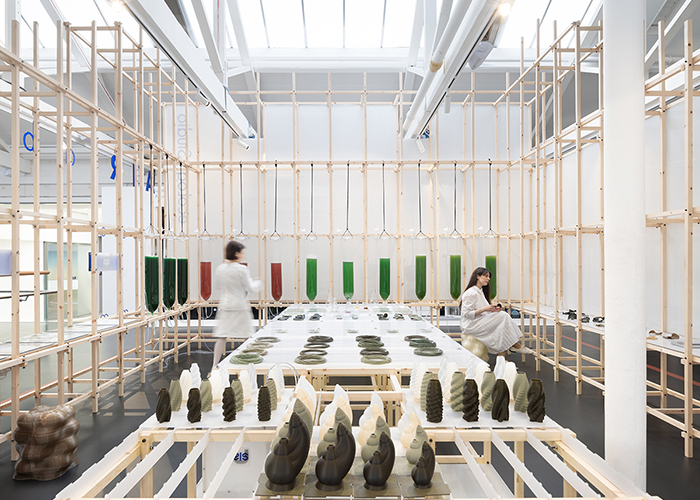
There has undoubtedly been a move toward more sustainable practices as well as connecting more directly with nature – or at least plenty of discussion around the subjects – but what is actually happening in the world of design? What is being done to research and develop new material possibilities that join the dots in the quest for reducing our carbon output whilst still continuing to manufacture? Perhaps really taking a direct lead from nature and its unerring drive to grow is the most appropriate approach to material development.
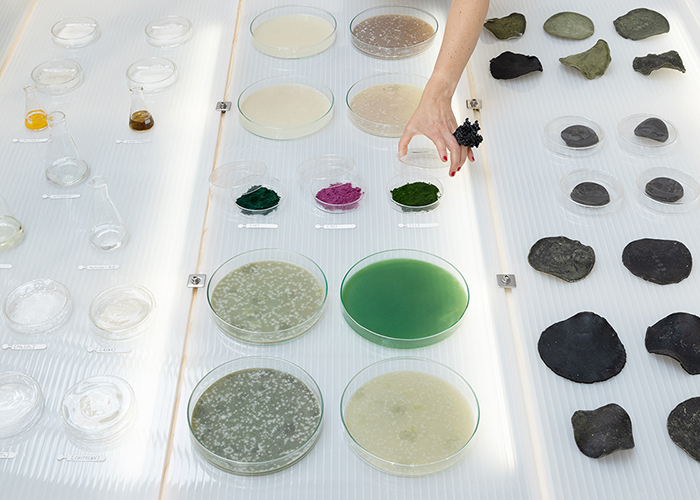
ecoLogicStudio Otrivin Air Lab (algal bio polymer ingredients and material samples) ©NAARO
Cellulose is a molecule that contains vast amounts of oxygen, hydrogen and carbon atoms and is perhaps most associated with being the main substance in the wall of plant cells. It is in fact the very thing that helps plant structures to remain rigid, a property that Dionne van Deursen has exploited in the creation of her material-led projects Unfold and Biotic. The latter involves ongoing research that explores the possibilities of a biologically grown bacterial cellulose material grown from microbes. This involves combining bacteria and yeast in a fermenting process, within which the bacteria are fed sweetened green tea. As van Deursen explains, “When this layer has dried, it becomes a solid material that has comparable properties to leather. The material that the living microorganisms create is biodegradable, strong and has a high flexibility.” Being such an organic process allows for nuance within the end product, including variations in translucency, which can be altered further with the introduction of natural food dyes derived from fruit waste.
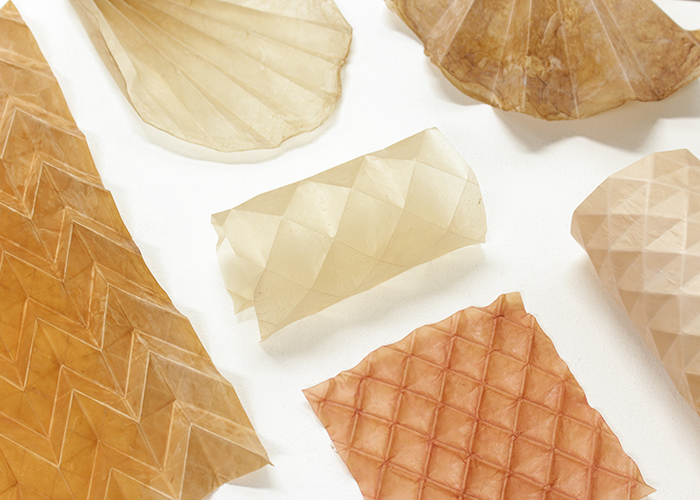
Unfold takes the symbiotic culture of bacteria and yeast one step further by introducing shape to the dried biofilm. By utilising simple folding techniques that remain visible in the final form, complex structures can be achieved.
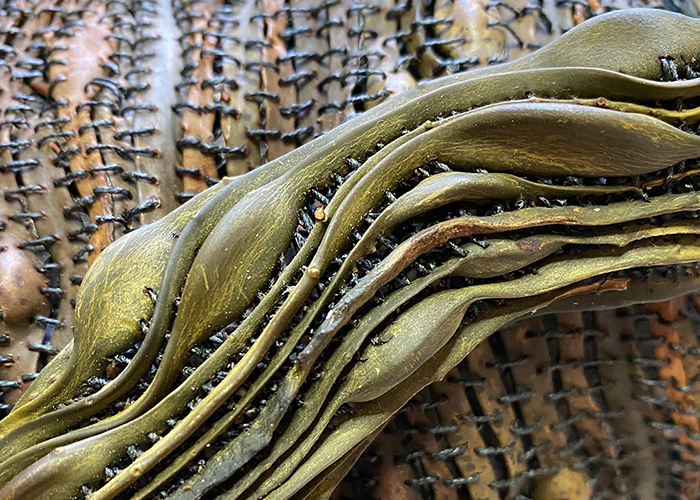
Dutch designer Jeannet Leendertse harvests abundant seaweed from her native shoreline to create organic fabrics, which she then forms into 3-Dimensional vessels. Rockweed is an ancient species of seaweed and as well as being incredibly common and hardy, it also helps to clean oceans, provide food and habitat for numerous species, protects increasingly fragile coastlines from erosion as well as locking in carbon. These properties have led it to be added to the Future Materials Bank, an initiative set-up by the Nature Research department at the Jan van Eyck Academie in The Netherlands, in collaboration with the Master’s program of Materials Futures at Central St Martins in London.
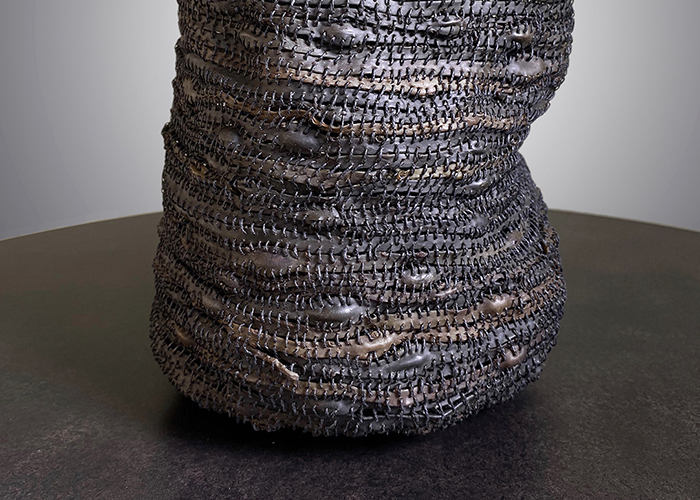
The idea of the initiative is to champion non-toxic, biodegradable or sustainable materials and help foster greater usage of them in future projects. That’s exactly what Leendertse has done, combining Rockweed with linen and wax, as well as horse hair as a thread, to create her forms. Again, once the material dries it begins to harden, but the unique properties of the seaweed mean that it can be revived, and therefore reformed, when exposed to water, making it almost endlessly reformable. By responsibly harvesting the Rockweed and elevating its characteristics into something practical through design, Leendertse hopes to show the beauty of the ancient algae whilst highlighting more sustainable ways of creating useful materials.
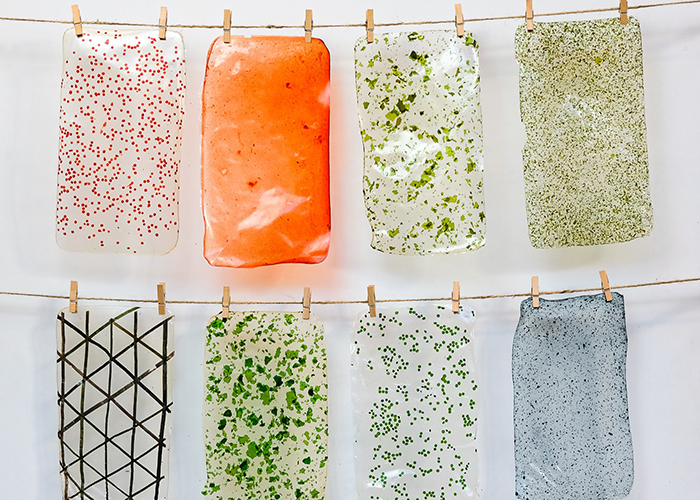
With such a variety of advantageous properties, it’s no wonder that several practices are turning their attention to seaweed. Studio Tång consists of two architects, Joline Schikan and Barbara Gwóźdź, who created The Seaweed Archives project as a part of their master thesis at Chalmers University of Technology. Once again, the focus is on carbon capture rather than carbon emission and as the team points out, the profuse substance has long been recognised for its multitude of attributes, “Seaweed, and algae in general, have long been used in coastal regions as a food source, fertilizer, energy source and for a variety of industrial applications because it is easy to grow, requires no land, fertilisers or fresh water, and grows about thirty times faster than land-based plants.” Turning the focus to building materials, the duo’s research has led to material experiments that include bioplastics sheets, bioplastic inflatable structures, Seacrete panels and seaweed shingles serving as both interior and exterior materials.
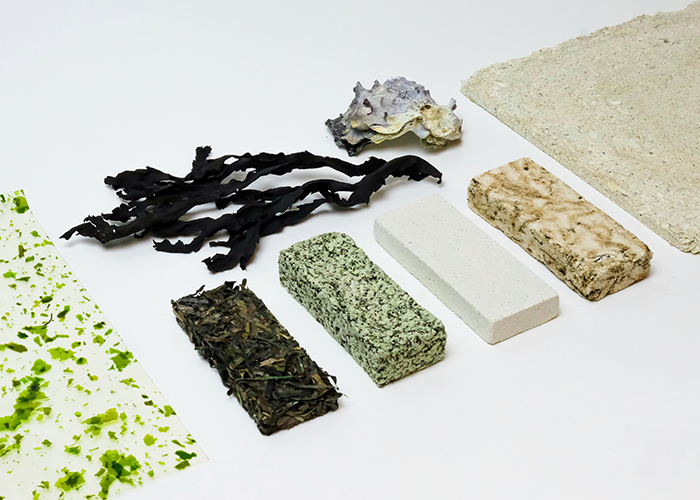
The appropriately named Seacrete is derived from ground oyster shells that are mixed with alginate and pieces of algae itself and once set offer an alternative to concrete. Experiments with this, and their bioplastics – which are made using agar agar (also derived from algae) glycerine, water and different additives – are ongoing, but open up further promising sustainable material possibilities.
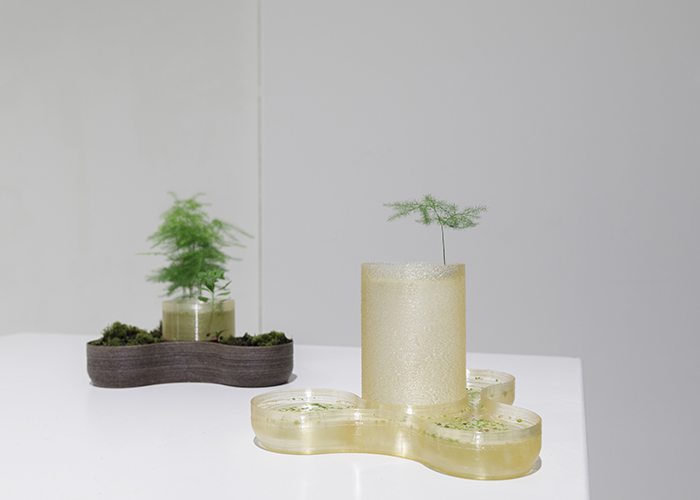
Beldsmits
Dutch design duo Klarenbeek & Droos are also interested in harnessing the speedy growing time and prolific photosynthetic rate of algae and have followed up their 2020 Seaweed Cycle project at the Museum Boijmans Van Beuningen with further plastic alternative developments in the form of their Weedware material. Utilising 3-D printing, they have discovered a way to create 3-Dimensional forms using the algae biopolymers, which have already taken the form of vessels as well as a recent collaboration with Felix Ghyczy, the son of the designer Peter Ghyczy, to create a seaweed version of his iconic Egg Chair.
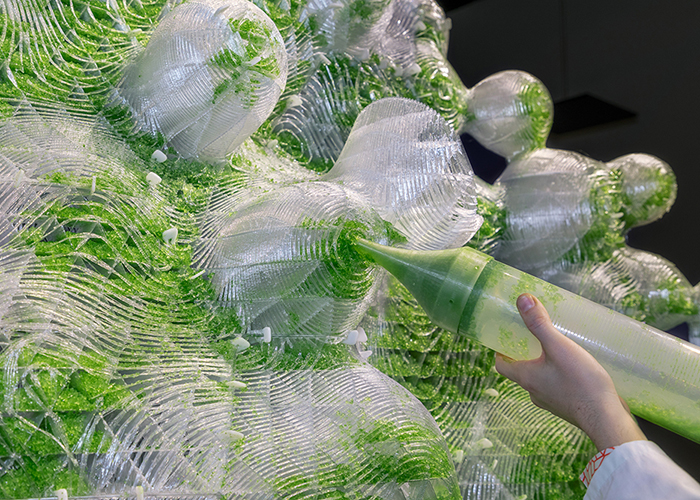
La Fabrique du Vivant, ecoLogicStudio ©NAARO
3-D printing can of course open up design possibilities beyond more traditional manufacturing processes, which is something that London-based ecoLogicalStudio has been exploring alongside their research into the use of algae in the built environment. Founded by architects and researchers Claudia Pasquero and Marco Poletto, the studio specialises in biotechnology, combining computational design, digital prototyping and living nature in their work. Large-scale projects include H.O.R.T.U.S. XL Astaxanthin.g, a 3-D piece of architecture designed from a digital algorithm that simulates the growth of a substratum inspired by coral morphology. The open structure is then injected with photosynthetic cyanobacteria on a biogel, which naturally converts radiation into oxygen through photosynthesis.
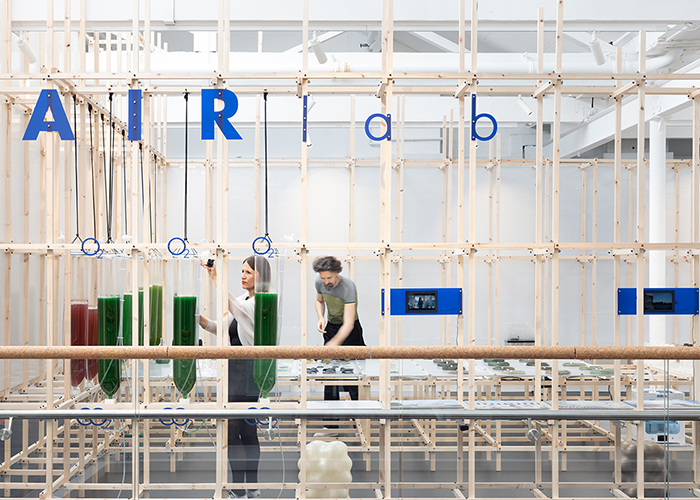
ecoLogicStudio Otrivin Air Lab ©NAARO
A more recent project, the Otrivin Air Lab, at London’s Building Centre explores the creation of biodegradable polymers made with the by-products produced when air purifying microalgae photosynthesize. Such materials can be turned into entirely new and useful products, which is something that the team also wanted visitors to play a part in:
“Through the application of the PhotoSynthetica technology, pioneered by ecoLogicStudio, the Otrivin Air Lab tests the feasibility to build a circular production workflow, where carbon dioxide (CO2) and urban air pollution are re-metabolized into fresh biomass. At the Otrivin Air Lab, visitors will be able to harvest microalgae that will then be transformed into algae-based bioplastic, biofilament for 3D printing and finally into new biodegradable products.”
As such, these innovative nature-based solutions quite literally mitigate the impact of urban air pollution on breathing health in the process of their creation, proving that engineering solutions from nature can go beyond what we’ve generally come to expect of simply “sustainable” practices.




